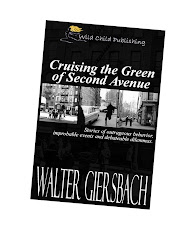My ancestors hover in the
household like ghosts enjoying a summer vacation.
I’m descended from a New England
family whose maternal forebears emigrated from England in the 1600s. Because of this, I’ll let you know that New
Englanders really do “use it up and wear it out” before anything is discarded. I’ve unpacked a lot of their trunks,
had boxes to sort through and albums to review.
It’s not unusual now to straighten up a room and stop to examine Great
Grandpa Ballou’s letters from Fort Barrancas when he was with his Vermont
Regiment, read postcards from Grandma Fisk invariably taking a train to another
town where she’d lecture, or trip over the toleware candle sconces Great-Great-Grandpa
Ezra Pierce played with as a child in 1816.
My limited religious ruminations stop at the thought that
we remain immortal until our last acquaintance passes on. Death isn’t abrupt, but it does catch up
eventually. Given this dollar-store
theology, I opt for saying you’re “alive” until you’re no longer remembered by
anyone. (It might help to have some
rural legends, like firewood theft prevention, to pass along for posterity.)
I’ll give proper due to statues in the town square collecting bird droppings and the tombstones moldering in the marble orchard. But I can also suggest the World Wide Web is an option for immortality.
Grandmother Fisk, for example, had been a lecturer on the
Chautauqua Circuit in the first decades of the 20th century,
traveling the country as America’s Foremost Cartoonist. She drew pastel sketches while narrating her
stories — patriotic, humorous and historic — before small-town audiences while. By idly Googling her
name, I discovered the University of Iowa had an extensive digital collection
of Chautauqua information. I called the
archivist at the U of I libraries, who exclaimed, “We had the notes and
programs and schedules, but we had no idea what the actual content of the programs involved!”
I was happy to donate her papers, photos, lecture notes and stories,
which are now online. Even better, she’s been given a new lease on life as students research women’s
liberation and write their master’s theses.
 |
| Marion Fisk, "Tenting Tonight" |
I brought her father back to life as well with a piece of
“true fiction.” Grandma Fisk would tell
me stories when I was a child curled up in her four-poster bed. One recollection was about a famous song to
come out of the Civil War, “Tenting Tonight on the Old Camp Ground.” This song made the name of its composer, Walter
Kittredge, known all over our country.
Kittredge would visit her father — my Great-Grandpa Ballou — and together
they’d sing “Tenting Tonight.” The
warmth of the “tent” formed by Grandma’s canopied bed and all those memories
can still comfort me. And perhaps even comfort
her spirit if she’s sitting on the bedpost.
Just possibly, my great-grandfather, a loyal Union soldier, also would
have a tear in his eye while tucked in snugly on the Web.
Long-dead
ancestors have all come back as living memories to new generations, as alive as
personalities as they were when the ladies chatted about them in the kitchen. I’m looking now at an ambrotype portrait of
my great-grandmother as a child in 1859.
In her penciled memoir, Mary Ballou wrote in the third person, “At 3
years of age her first picture was taken by a traveling photographer, Lawrence
by name. She sat in a borrowed high
chair, belonging to Charlie Jones [a neighbor child]. Black it was with white line trimmings &
a diagram on the back. Her dress was
pale orange with little white diamond patterns, low neck, short sleeves, and
Mary was half afraid, but altogether curious to see the man put his head under
a black cloth. Mother was ill with
typhoid fever, and Mary was recovering from the same.”
Little
Charlie Jones died from typhoid shortly afterwards, and I wonder who remembers
him. He never delivered a speech or
wrote a letter, nor had his likeness captured in an ambrotype. Just a tombstone marks his passing, or a post
script on his parents’ marker, that makes small claim to his “immortality.”



No comments:
Post a Comment